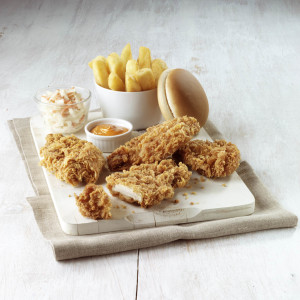Ice cream is one of those products which makes some photographers tremble. Like a lot of things if you haven’t had much experience in shooting ice cream you can end up in difficulty. food photographer Graham Precey suggestion would be to do some test photography on your own to get an idea what its all about before you do a commisioned job. Ice cream melts and thats your big enemy.A lot of my ice cream shoots have been on the hottest summer days so you have to know what your doing! So you need a freezer, ideally a chest freezer so that its easy to access the ice cream. The freezer needs to be set on very cold to enable you to get as much time on your side. You can also hire dry ice which can freeze the ice cream to rock hard very quickly. This will give you plenty of time to handle the ice cream, I tend to use Dryicesupplyuk.com who can post the dry ice to you next day.They are easy to deal with and very professional. Dry ice evaporates around 11% per day in an unopened box so you need to get in more than you actually need. I prefer the small 3mm pellets which are easy to manouver around the product. If the pellets are too big, the ice cream can get marked by the pellets so be warned. Also, never handle the ice cream with your fingers. A, you can get stuck to the product if its very cold but B, you will almost certainly get a melt mark where a finger has touched the icecream. Most annoying when you have a perfect scoop. I can usually judge a home economists proficiency by the way they handle ice cream. I have a set of dental tools which allow me to handle the ice cream and lift and position the product into the shot without marking it.
Scooping, well I’ll leave that up to you. Everyone has their own way of doing it and there are only so many trade secrets I’m prepared to give away! :}
Use a straw to blow gently onto the ice cream to eradicate the frosting.
Nb. There was a time when all ice cream had to be a rock hard ball but modern photography allows for a more relaxed approach and the ice cream can be quite soft, even melted., so you need to go with the flow and find out exactly what your client wants you to do.
When you get a moment, check out my new ice cream photography at www.precey.com.
Thanks for reading and all the best till next time.
Graham
